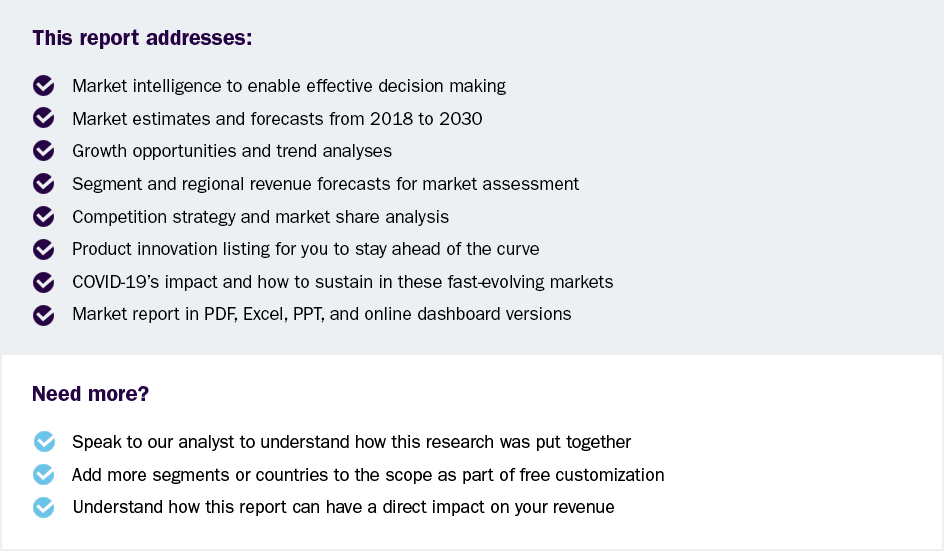Baby Wipes Market Size To Reach $7.99 Billion By 2030
Baby Wipes Market Growth & Trends
The global baby wipes market size is anticipated to reach USD 7.99 billion in 2030 and is expected to expand at a CAGR of 5.2% from 2025 to 2030. An increasing number of working women, rising prevalence of e-commerce retailers, and growing concerns among parents related to baby’s skincare and nourishment are among the prominent factors expected to drive the market.
Millennial parents have become more conscious about the product they purchase for their children and do not mind paying higher prices for baby wipes, thus fueling the growth of the market. Infant’s skin lacks the maturity of adult skin and requires more caring, especially the skin near the diaper area requires constant cleaning, which makes baby wipes their preferred choice to get rid of irritating effects of urine. In addition, improved functionality of baby wipes, including anti-septic and hypoallergenic properties, is another factor boosting the market growth.
According to the National Retail Federation U.S. report 2018, millennials are parents to 50% of children in the U.S., and hence are making a significant contribution to spending on baby care products related to raising their children. Millennial parents differ from other parents both in their lifestyle and shopping choices. With the availability of easy internet, these parents turn to their smartphones at every point during shopping to consciously examine the product details. According to the aforementioned study, close to 78% of parents use their phones to research about all baby care products before purchasing.
The dry wipes segment dominated the market with the largest revenue share of 58.8% in 2024. Manufacturers of the baby wipes have been offering products with natural ingredients to pique the interest of the informed parent. For instance, Nest Designs, a U.S.-based company, offers organic dry baby wipes made from biodegradable organic cotton, aloe, and camellia sinensis leaf extract, which help in nourishing infant skin and keep it refreshing.
By distribution channel, hypermarkets/supermarkets dominated the market with the largest revenue share in 2024. A wide product range, offers, and discounts attracting a larger number of consumers are the key strategies opted by such channels to increase revenue and footfall in any store. Apart from that, in-store comparison between different products of different brands guided by specialized staff is the physical or in-store experience that consumers prefer, thus helping in making a more effective purchase.
Covid-19 pandemic has affected the sales of baby wipes positively as baby wipes have been one of the prominent products considered by consumers during panic buying conditions. Moreover, the demand and supply of these products have not been fully impacted by the lockdown situation because of considering baby wipes as an essential good under many Government regulations. Baby wipes are among the cheapest wipes available in the market and are used by people for multiple applications, including paper towels, toilet paper, and tissues, which, in turn, is driving the demand for the product.
North America baby wipes market dominated the global industry with the largest revenue share of 29.0% in 2024. Growth of the market is attributed to the strong presence of leading brands including Huggies and Pampers, along with a well-developed supply chain in the region. Moreover, parents in countries, such as the U.S., take extra care of the hygiene and use wipes very frequently when taking care of their baby.
 Request a free sample copy or view report summary: Baby Wipes Market Report
Request a free sample copy or view report summary: Baby Wipes Market Report
Baby Wipes Market Report Highlights
-
The dry wipes segment dominated the market with the largest revenue share of 58.8% in 2024.
-
The wet wipes segment is expected to grow at the fastest CAGR of 5.4% over the forecast period.
-
Hypermarkets/supermarkets dominated the market with the largest revenue share in 2024. These retail channels offer a wide range of baby care products under one roof, making it convenient for parents to purchase all their baby essentials in a single trip.
-
The e-commerce segment is expected to grow at the fastest CAGR over the forecast period.
Baby Wipes Market Segmentation
Grand View Research has segmented the global baby wipes market report based on product, distribution channel, and region:
Baby Wipes Product Outlook (Revenue, USD Million, 2018 - 2030)
-
Dry Wipes
-
Wet Wipes
Baby Wipes Distribution Channel Outlook (Revenue, USD Million, 2018 - 2030)
-
Hypermarket & Supermarket
-
Pharmacy & Drug Store
-
E-commerce
-
Others
Baby Wipes Regional Outlook (Revenue, USD Million, 2018 - 2030)
-
North America
-
U.S.
-
Canada
-
Mexico
-
-
Europe
-
Germany
-
UK
-
France
-
Italy
-
Spain
-
-
Asia Pacific
-
China
-
Japan
-
India
-
Australia
-
South Korea
-
-
Latin America
-
Brazil
-
-
Middle East and Africa (MEA)
-
South Africa
-
List of Key Players of Baby Wipes Market
-
Johnson & Johnson Services, Inc.
-
KCWW
-
Procter & Gamble
-
Unicharm Corporation
-
BABISIL
-
Cotton Babies, Inc.
-
Farlin-Global
-
Hengan International Group Company Ltd.
-
Himalaya Wellness Company
-
Pigeon Corporation

